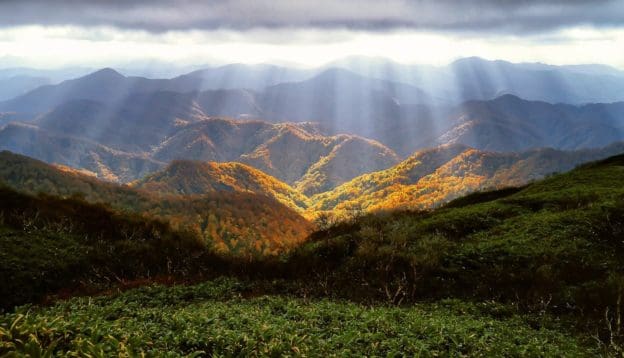“We have to do everything we know how to do to address climate change.”
Sir Nicholas Stern
But what is “everything we know how to do”? What does “everything” mean? Who are “we”?
Until very recently “everything” meant reducing emissions and pulling excess carbon out of the atmosphere. That has slowly begun to change, but our cherished , tenacious, fallacious assumption has been that global warming revolves around one isolated variable: carbon.
“We” has meant the climate research of the past two hundred years, under the guidance and inspiration of physical scientists. They have done superb work, for which we owe deep gratitude. I would, however, point out two serious considerations, at the heart of Biodiversity for a Livable Climate’s mission:
Over the past thirty years, since Jim Hansen’s iconic 1988 warnings to Congress, our greenhouse gas dilemma has only grown worse. Dramatically worse.
In that worldview, biology barely exists.
Focusing on carbon makes our campaigns relatively simple but does not take into account the complexity of the Earth system. The Earth is the planet of biology, crafted in the crucible of four billion years of evolution, plate tectonics and vagaries of the sun, among many other things. While the likes of errant asteroids can cause massive disturbances, in the long intervals between cosmic catastrophes biology is firmly in charge of most of what happens on Planet Earth.
Climate is thus a biological phenomenon and where the fundamental solutions lie. Biology represents the most complex set of relationships on this planet, and likely in the entire universe. It even appears to defy the implacable 2nd Law of Thermodynamics, the Entropy Law, which describes the irresistible passage of all matter and energy into disorder and nothingness (biology doesn’t really deny the 2nd Law, but it took more than a century to figure that out).
Yet biology, as a driver of climate (as opposed to a victim of hurricanes, insects, wildfires, etc.), is the scientific orphan of climate research. As a result any serious inquiry into the impacts of biology in mainstream science are limited and recent. Unfortunately, having been ignored or summarily dismissed over two hundred years, biological inquiries have also been deeply biased (i.e., bullied) by two hundred years of research framing climate as a physical science problem.
I say this because we have abundant examples of ecosystem restoration leading to cooler temperatures, return of biodiversity, rehydration of degraded and desertified lands, etc. despite elevated GHGs. Of course GHGs are heat-trapping gases and a serious problem, but they are far from the only factor and may even be a less important factor than biodiversity. Might GHGs eventually overwhelm other factors? Yes, they might, but that does not yet seem to be the case.
As for Sir Nicholas’s entreaty, I agree, but the catch is “everything we know how to do.” Do we actually know how to do all the things we think we know how to do? Despite growing enthusiasm over atmospheric carbon dioxide removal (CDR) through high-tech geo-engineering, the only CDR we truly “know how to do” is photosynthesis, turning carbon dioxide and water into sugars, the basis of life on Earth.
The technological CDR and its unintended consequences are currently speculative and possibly quite dangerous, not to mention expensive and yet to be demonstrated at scale. Clearly there are people who are passionate about creating it and funding it, and I wish them well. In the meanwhile I hope that we will proceed with bringing billions of acres of dead landscapes back to life.
Finally, one persistent myth is the assumption that we have until 2050 and beyond to get this right, or that 1.5 °C is a safe target. Yet all hell is breaking loose now, we’re on an accelerating, exponential path to destruction – and that’s at barely more than 1.0 °C. With all the feedbacks in play how can we dare to imagine that we can rein in the temperature simply by decarbonizing?
Climate disruption is a function of the degraded state of the living world – and restoring that, fortunately, is precisely what “we know how to do.”
And we know how now. It’s time to bring Nature home.
[NOTE: For the scientific basis of this work, please see our Compendium.]


To add to Adam’s argument (the central argument of Bio4Climate), children aren’t so interested in the chemistry of carbon emissions as they are in the wondrous creatures, plants, and more that together keep our planet livable. They are, then, naturally inclined to adopt this biology based, eco-restoration paradigm to become tomorrow’s earth stewards.